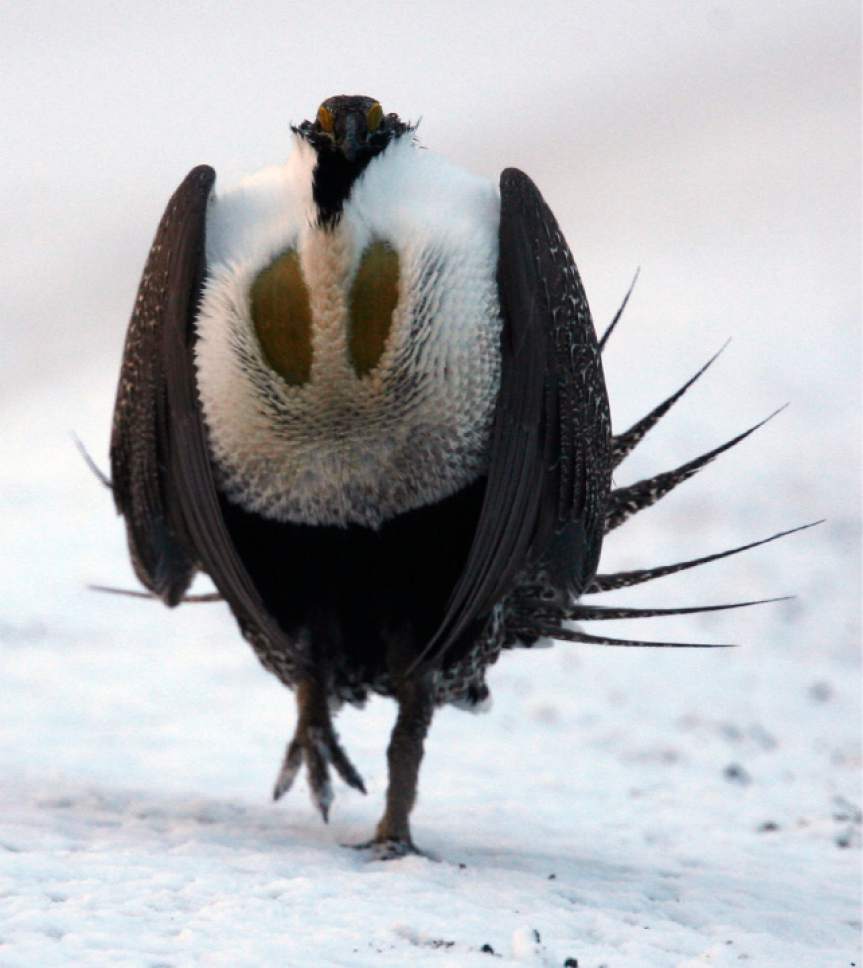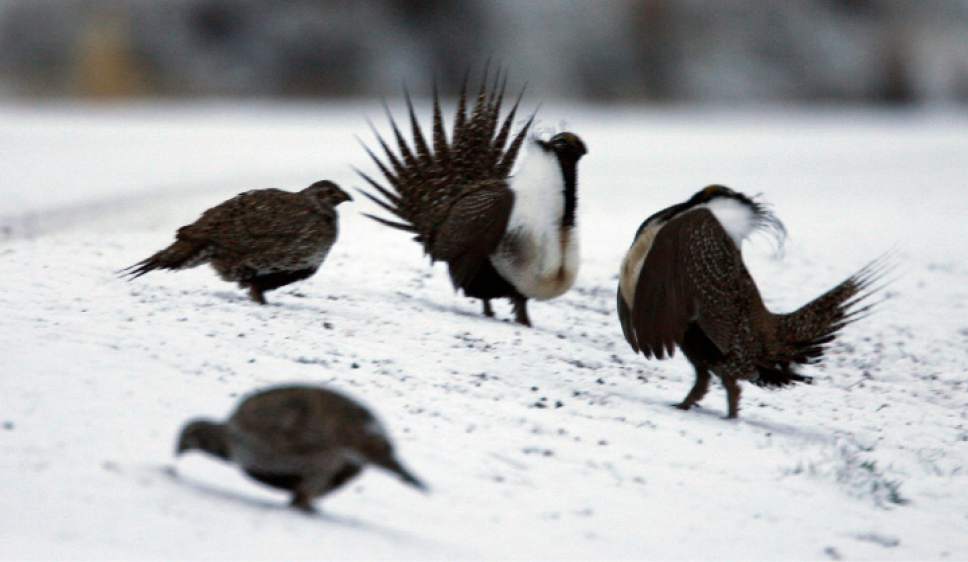This is an archived article that was published on sltrib.com in 2016, and information in the article may be outdated. It is provided only for personal research purposes and may not be reprinted.
The Interior Department is proposing to put 10 million acres in six Western states off limits to new mining in an effort to protect habitat for the sage grouse, a bird whose numbers have dwindled to the point that it was nearly listed as an endangered species last year.
The planned action, announced Thursday, would prohibit new mining claims on about 233,000 acres in Rich County near Bear Lake and in the Goose Creek Mountains in the extreme northwestern corner of the state.
It would do the same in larger swaths of Nevada, Idaho, Montana, Wyoming and Oregon.
The decision would be up to incoming President Donald Trump and his Interior secretary — Trump has picked Montana Rep. Ryan Zinke — to finalize the proposed withdrawal after he takes office next year, perhaps providing an early barometer of the new president's approach to conservation.
Zinke has been critical of the administration of President Barack Obama in its efforts to preserve sage grouse habitat in the past, calling the land-use plan process a "land grab."
Jim Catlin, a wildlife scientist who works with the Sierra Club's Utah chapter, said while 10 million acres sounds like a lot of land, put in the context of the billion acres of Bureau of Land Management and U.S. Forest Service land in the six states, it appears the agency was surgical in selecting areas to be withdrawn and tried to avoid conflicts where there is actual mining potential.
Of the 5 million acres of sage grouse habitat in Utah, Catlin said, the proposed change only affects those portions in Rich and Box Elder counties "and there's almost no mining activity whatsoever in those areas." A Utah guide to extractive resource industries does list a couple of gold claims in the Goose Creek Mountains.
The sage grouse proposal only impacts hard-rock mining, not coal, oil and gas, or gravel extraction.
The announcement of the Interior Department's plan to withdraw the BLM and Forest Service land came a day after Obama announced the designation of 1.35 million-acre Bears Ears National Monument in southeastern Utah, igniting outrage from Utah officials, and the 300,000-acre Gold Butte National Monument in Nevada.
The Interior Department first announced it was considering the land withdrawals in September 2015, after it decided not to add the greater sage grouse to the Endangered Species List, instead opting to launch efforts to conserve the bird's habitat.
Interior Secretary Sally Jewell announced new mining permits would be put on hold on the 10 million acres while the department studies the potential impacts on the birds. The department also revamped land-use plans across the West in an attempt to preserve the bird's habitat.
While there were once millions of the puffy-chested, wild chicken-sized birds roaming the western United States, the Interior Department estimates that today there are between 200,000 and 500,000 remaining.
With the threat of the bird landing on the Endangered Species List, Western states, including Utah, sought to implement state-level sage grouse habitat conservation plans, the success of which Jewell cited as a reason to not give the bird protected status.
In addition to halting new mining on the 10 million acres, the BLM also considered other options for preserving the habitat — from taking no action, to proposals from the governors of Nevada and Idaho that would swap other habitat for land with high mineral potential for sagebrush or, in Idaho's case, merely carve out about half a million acres from the proposal.
The agency will be taking public comment on the proposal through March, and plans to hold eight public meetings around the West in February to gather input on the proposed protections before any decision is finalized.
"The Trump administration could put a hold on this — and stop it and I think they might just do that," Catlin said. "This is nothing that is really a last-minute decision to be undone [by the new administration] because the real decision is still down the road."
If Trump and Zinke decide to implement the rule, the secretary would have two years to withdraw the lands from any leasing.
Twitter: @RobertGehrke





